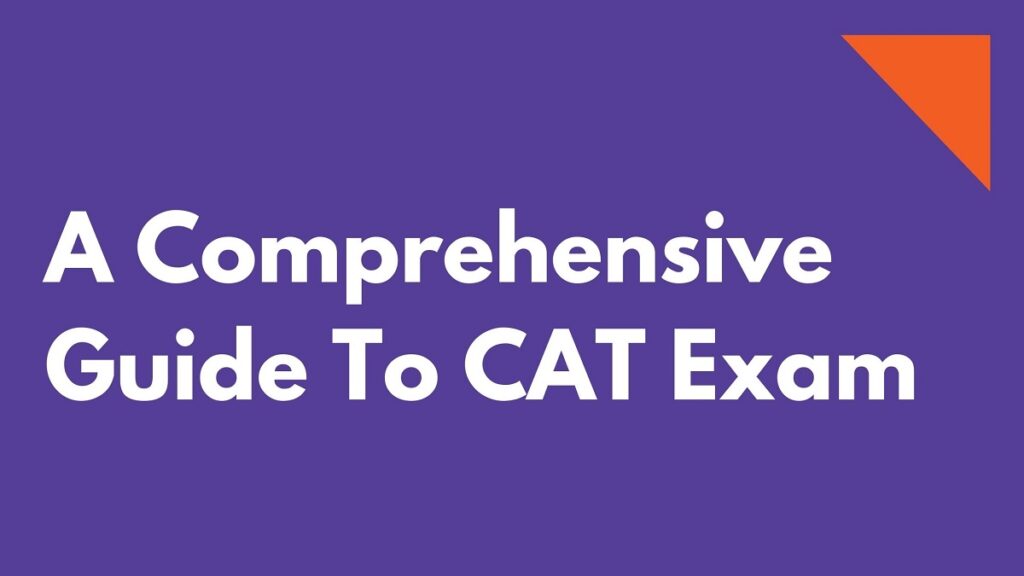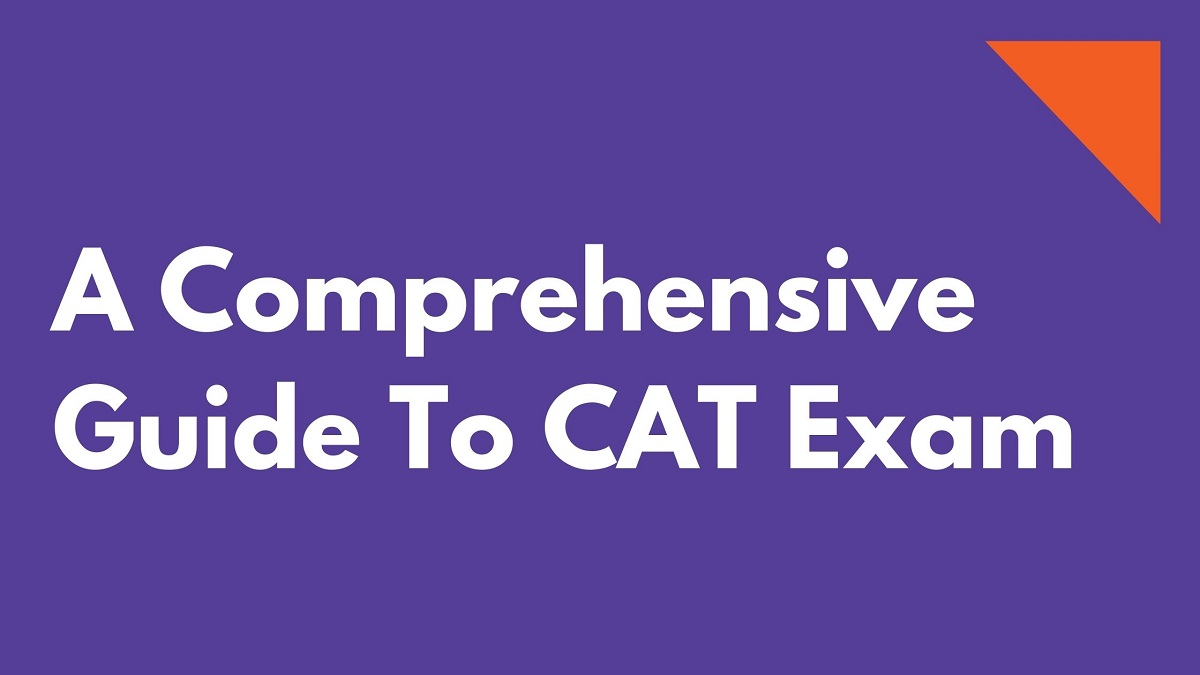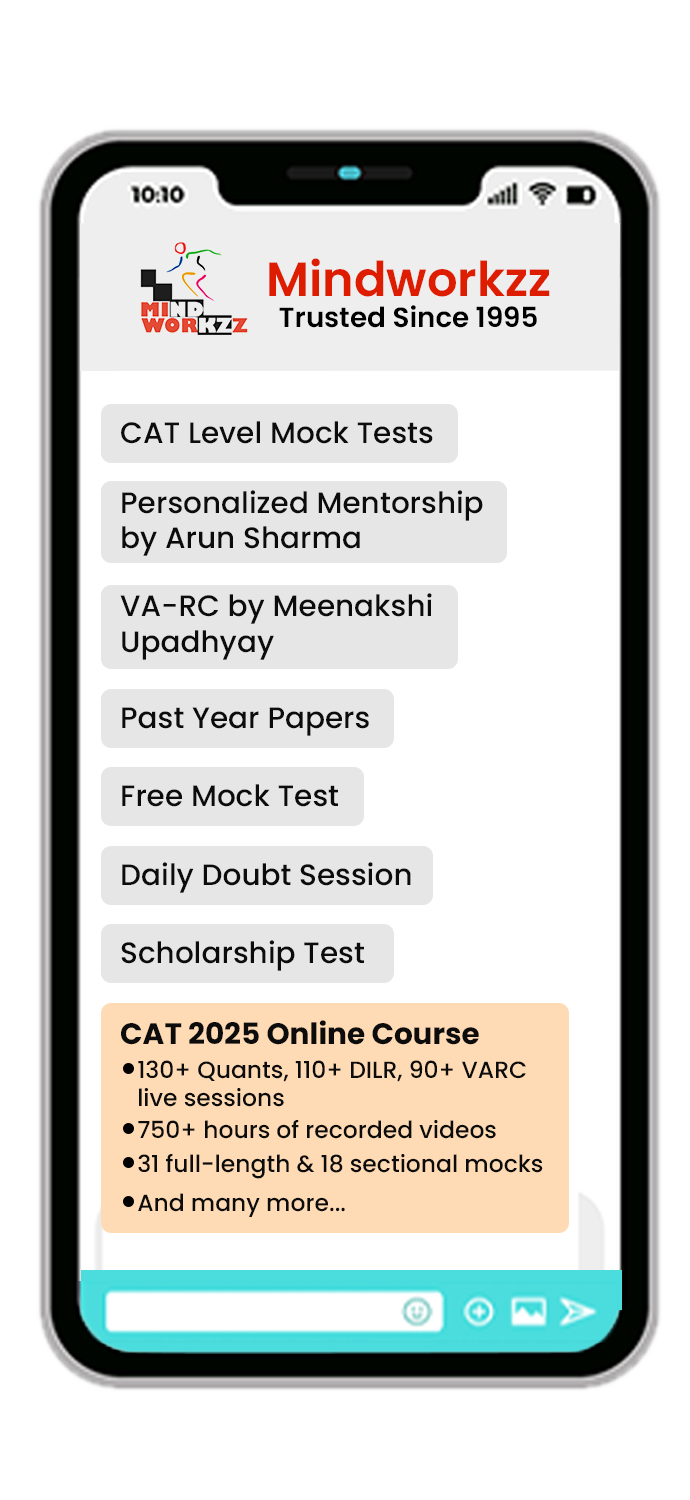
What is CAT Exam?
CAT (or the Common Admission Test) is an exam in India which throws open the gates to the highly prestigious B schools in India. CAT in other words, is an MBA entrance exam in India. It grants you admission into the IIM’s across the country. In addition to these B-schools, CAT is accepted by SPJIMR, FMS Delhi, MDI, IMI New Delhi, IMT Ghaziabad, FORE Delhi, NDIM New Delhi, Great Lakes Institute of Management etc to count a few of hundreds of B-schools in the country. CAT is a 180 minute or 3 hours long exam held over the online interface which is attempted by over 2.5 lakh aspirants every year. CAT is conducted by one of the top IIM’s in the country every year on a rolling basis. CAT is held in over 156 cities in 2 different slots- morning and evening
The CAT tests the candidates over 3 different sections which are
The VARC section or the Verbal and Reading comprehension section: This section consists of 34 questions and is of 60 minutes. There are 5 reading comprehensions and 10 verbal ability questions which comprise of Parajumbles, Paragraph summary and odd one out. All of these questions require a good hold on reading and analysis of the writeups. A good amount of reading and practice of questions can help you better gain the hold on these questions.
The DILR section or the Data Interpretation and Logical Reasoning section: This section is of 60 minutes, comprises of 8 sets or 32 questions and tests the candidates over a range of logical ability and data interpretation questions where one is required to put to use the logical and analytical side of the brain to its extent. Getting a good hold on this section requires a good amount of practice and an understanding of the various types of approaches one can use in different types of question sets.
The third and the final section that blinks on the screen after a 2-hour long fight is the QA section or the Quantitative Aptitude section which is of another 60 minutes and 34 questions. It tests the candidate on the applicability of a variety of basic concepts but requires a huge amount of practice to get through. CAT seems tricky at first but is all about getting to know it better and then applying the knowledge in the best possible way which works wonders for you.
CAT Eligibility Criteria
The official notice about the date of the CAT exam is being awaited which should be out anytime soon in the month of July. The CAT is most likely to be conducted between the last week of November and first week of December this year and would be conducted by IIM Indore this year. The registrations for the same would begin in the month of August and would close most likely by the end of September.
- Candidates who have attained a minimum of 50%** in their graduation (or equivalent) can apply for the exam..
- Candidates also possessing professional degrees(CA/ICWA etc) can apply provided they have attained a minimum of 50%** (or equivalent.)
- Candidates, who are in the final year of their graduation degree can also attempt the CAT
- There is limit on the age and the number of times a candidate can attempt the CAT. People of all ages can attempt the CAT n number of times
** This aggregate boils down to a minimum of 45% score in graduation for non-general category of candidates. Also, there is no reservation for non-general candidates in the exam.

CAT registration/ admission process
CAT is an exam which follows a complete online process form the registration to the conduction of the exam to the declaration of results. The registration process would begin in the month of August after the official announcement for the same is out and would be carried out on the official website of the CAT exam- www.iimcat.ac.in
You would have to register yourself as a candidate and fill out the application form. After this, you would have to pay the registration fees which has increased to Rs. 2000 for general category candidates and Rs. 1000 for non-general category of candidates. Do keep a record of your login ID and password for you would require the same for downloading the admit card from the same website in the month of October. Admit cards would be issued only to registered candidates.
Pattern of the CAT exam
The CAT is a 3 hour long (180 minutes) exam which is divided into 3 sections- Verbal Ability and Reading comprehension (VARC), Data Interpretation and Logical Reasoning (DILR) and Quantitative Ability (QA) of one hour each. The candidates cannot toggle between sections and can move to another section only after the time limit (60 minutes) for a section are over after which the responses for the section are auto submitted and the candidate is moved to the next section. The total number of questions in the exam is 100, each carrying 3 marks.

In addition to this,
The paper contains 2 types of questions- MCQ’s and TITA type.
- MCQ’s or Multiple choice questions carry 3 marks each for a correct answer and a negative marking (-1) for each incorrect answer. There is only one correct answer out of the 4 options given. MCQ type questions in the exam are between 70-75 out of a 100 questions
- The non MCQ type questions or the Type in the answer (TITA) type questions are another question type in CAT wherein the candidate has to type the correct answer in the boxes given in the particular question. These questions carry 3 marks for every correct answer and carry NO NEGATIVE marks for the incorrect answers. There are 25-30 TITA type questions in the exam and are present in each section.
CAT syllabus
The syllabus for the exam is not a too elaborate one but is something which cannot be defined rigidly. There have been question types which have disappeared, appeared and again disappeared over the years. There however remains a broad category of topics which need to be covered before one gives the exam.
Verbal Ability and Reading comprehension
- Reading comprehension is the first question type that appears in the VARC section and generally has 24 questions of the same. The comprehensions appear from various broad fields such as science and technology, history, Greek mythology, philosophy, politics to name a few. To score well in this, one has to have a good hold on reading and be able to comprehend the meanings well.
- Verbal ability section is the second category which lies in the VARC section and comprises of Parajumbles, Para summaries, Irrelevant statements and also, critical reasoning as broad categories. One is also advised to cover question types such as fill in the blanks, sentence correction, Facts, Inferences and Judgements (FIJ) for these have been some of the questions types which have been seen in the CAT time and again.
Data Interpretation and Logical reasoning

Quantitative ability
- Number system, sequences and series and progressions- AP,GP,HP
- Averages and alligations
- Percentages
- Profit-loss
- Ratio proportion variation
- Simple interest/compound interest
- Time speed and distance
- Time and work
- Geometry- triangles, circles,quadrilaterals, polygons, coordinate geometry, mensuration
- Quadratic equations and functions
- inequalities
- Logarithms
- Trigonometry
- Set theory and venn diagrams- maxima minima
- Probability
- Permutation and combination
This is the basic outline of the syllabus for the CAT exam
CAT Admission Process
The admission into the B-schools would be carried out after 3 stages of screening- the CAT result, the Written Ability/Group Discussion round and finally, the Personal Interview. Each B-school would carry out its individual admission process and release its individual merit lists.
- Shortlisting based on the CAT result
The CAT result would be declared somewhere around the 1st week of January. Only the candidates who clear the required cut-off would be called for the processes further. The minimum cut off for making it to the IIM’s is above 90+ percentile although it varies from institute to institute with the crème de la crème institutes requiring a higher cut-off. The cutoffs also vary from General to Non-General categories and are also dependent upon the candidates’ gender and graduation backgrounds. The cut-offs for the non general categories are lower than that of the general category candidates.
The records of candidates (CAT scores, past academic records and backgrounds etc.) who clear the cut-off are then evaluated by the institutes who then finally summon the candidates for the next rounds.
- The Written ability/ group discussion stage
The process varies from institute to institute; some may prefer the candidates giving the written ability test where the candidates are given a certain topic- general, current affairs, abstract topics etc upon which the candidate is expected to write an essay within a specific time limit. Some other institutes conduct group discussions where a group of 8-10 candidates are given a specific topic for discussion within a specified time limit. The candidates are then evaluated based on parameters such as leadership qualities, team work, quality of content, confidence, discipline etc. Some other institutes may require a combination of both processes and then assess the candidate.
- The personal interview round
Usually, the group discussion and the personal interview round is conducted on the same day one after the other. In the personal interview stage, the candidates face a panel of interviewers who interact with the candidate personally.
It is based on all the 3 parameters that the final call of the candidate is converted or rejected.
The final result is prepared considering weightages of these parameters in mind

FAQ's
- What is the fee for the CAT form?
The application fee for the CAT form is INR 2000 for the general category and INR 1000 for the reserved category.
- Can I choose the date and time of the CAT exam?
No. The date for the exam is fixed and the slot for the exam is allotted to the candidates randomly.
- Can I take a calculator in the exam hall?
No, Candidates are allowed to carry nothing into the exam hall except their identity proofs and their admit cards. Rest is all provided by the exam centre
- What is the required percentile to get into the IIM’s?
There is no rigid basis of percentile upon which the candidates are called for the GDPI rounds for admission to IIM’s but the cutoff usually varies from 99.5+ for general candidates and varies within a bracket of 55 to 70 percentile for the non general categories. However, the cutoffs are also determined by a number of other factors also.
- When will the CAT 2020 result be declared?
The CAT results is usually released in the 2nd week of January.
- If a student is in the 2nd year of their graduation, are they eligible to apply?
No. Only students in their last year of graduation can apply for the CAT
- Is there any limit to a number of times a candidate can attempt CAT?
CAT does not have an upper limit to the maximum number of attempts by a candidate. It can be taken unlimited number of times.
- Can I take CAT 2020 twice?
Any candidate found to be giving the exam twice will be disbarred from the same.
- Do I have to pay individually for institutes I am applying to?
For the institutes(majorly IIMs) covered within the application form, you only have to pay for the application fee. But for institutes which are not included in the CAT form, you have register for them separately on their individual websites and pay separately for them.
- What to do if the amount for the registration gets deducted but my form is still not submitted?
Immediately bring this to the notice of the helpdesk. Call on their toll free no- 1-800-209-0830 (open from Monday to Saturday 9.00 am to 6.00 pm) or email them on [email protected]
- Can someone with backlogs in their degree apply for CAT?
Yes, you are eligible to apply. Just select “still in the final year of degree”
- What to do when my university name is not displayed in the drop down list?
Just select others from the drop down and continue filling your form.


